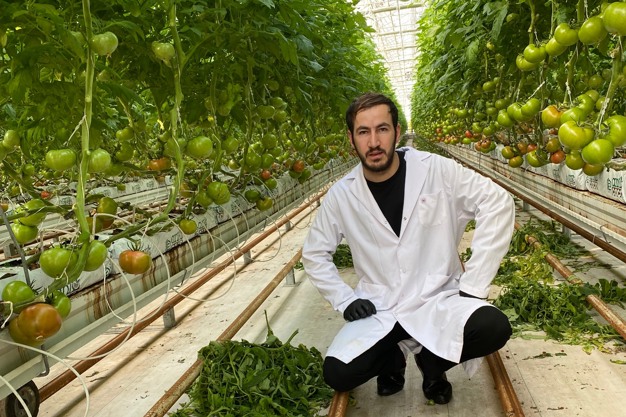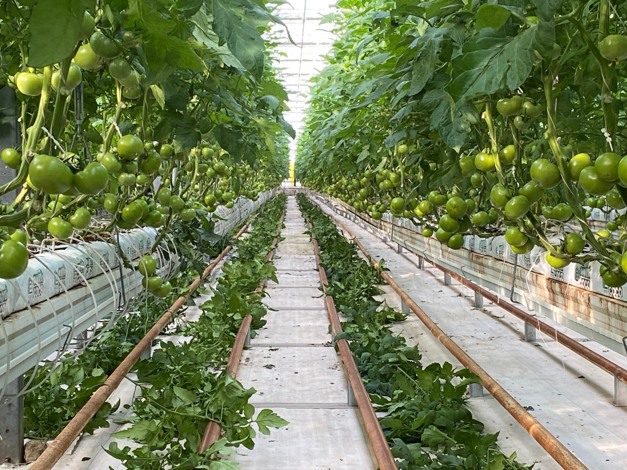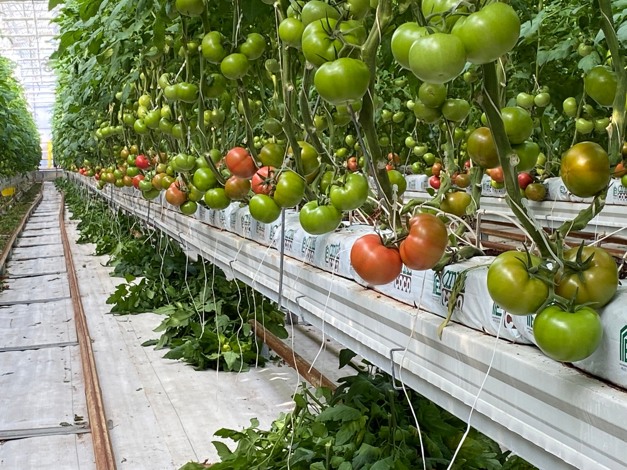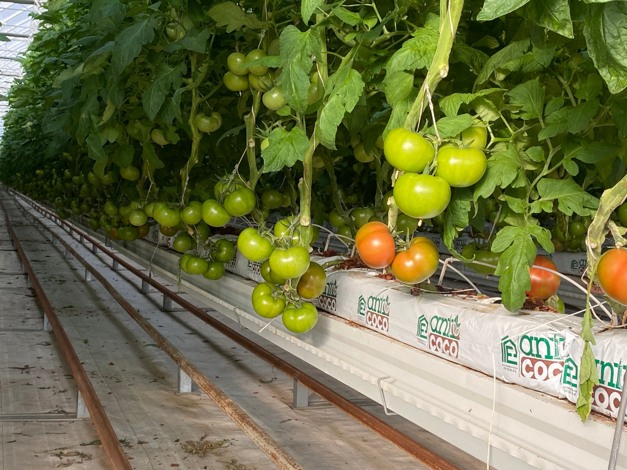Imagine this: Outside, it's a freezing winter. The temperature has dropped to -25°C, -30°C, everything is covered in ice, and the bitter cold wind dominates the landscape. The ground is frozen solid, and nature has fallen into a deep slumber. But as you step inside the glass walls of a greenhouse, you find yourself in a completely different world. It's the Shakh Eco Food greenhouse we're entering. In this vast 14-hectare high-tech greenhouse, spring never ends—lush green leaves and vibrant, juicy Fujimaro tomatoes thrive in warmth and abundance. Elikram Mustafazade, Agasahib Gasimov and consultant Dr. Rasim Mammadov reveal the secrets of growing summer crops in the heart of winter.

Kazakhstan is the 9th largest country in the world and boasts vast lands in Central Asia. Positioned as a bridge between Asia and Europe, it is rich in natural resources and holds significant potential for agriculture. However, Kazakhstan's climate is extreme. In summer, temperatures can soar to +40°C, while in winter, they can plummet to -40°C. Such harsh conditions make open-field farming extremely difficult.
Despite these challenges, Kazakhstan's vast land and water resources make it an important player in agriculture. The country is known for grain production, livestock farming, and now, innovative greenhouse technologies.

Growing tomatoes in Kazakhstan's harsh climate is impossible in open fields, but in this greenhouse, nature's rules no longer apply. "We have redefined agriculture. The Shakh Eco Food is set to take Kazakhstan's agriculture to a whole new level", says Elikram.
The greenhouse maintains a constant temperature of 20-25°C. However, achieving and sustaining this ideal climate is not as simple as just installing heaters. Smart energy management and advanced insulation are crucial, which is why they opted for double-layer polycarbonated walls. "Unlike regular glass, polycarbonate traps heat inside and prevents cold air from entering", Elikram shows. The greenhouse is equipped with energy curtains, automatically closing at night to retain heat and reduce energy costs. Also, localized heating sources are used. "We're utilizing sustainable solutions like gas and biomass energy, which help combat the brutal winter cold."

Irrigation water
One of the biggest challenges in cold climates is keeping the irrigation water warm. "If the water temperature is too low, the plant's root system can become stressed, leading to slower growth and reduced yields", Agasahib explains. To prevent this, the team uses hot water pipes. "Heated pipes run beneath the plant beds, ensuring that the roots stay at the optimal temperature." The boiler system heats water with gas or biomass energy, which is then circulated throughout the greenhouse. And finally, sensors monitor the water temperature and adjust heating as needed, ensuring that plants always receive water at the ideal temperature. "By keeping both the air and water warm, we create an optimal microclimate where tomatoes can thrive—even in the harshest winters."
It might seem that cold weather naturally prevents plant diseases. "Unfortunately, that's not always the case", Elikram says. "And of course in a greenhouse environment, high humidity can lead to dangerous fungal and bacterial infections." The greenhouse is equipped with ventilation systems, as the continuous air circulation reduces the risk of mold and fungal outbreaks. "And instead of chemical crop protection, we use natural predators in our biological pest control. Beneficial insects help eliminate harmful pests."
The tomatoes grown in Kazakhstan's winter travel thousands of kilometers to reach Russian markets. Ensuring they stay fresh during transit is key, which is why every part of the cultivation is set toward achieving high quality.

As a substrate, the Fujimaro tomatoes are grown in cocopeat. "By using substrates, we can eliminate soil-borne diseases and minimize the use of water, making irrigation highly efficient. With the drip irrigation system, each plant receives the exact amount of water and nutrients it needs – no more, no less." The nutrient absorption is precisely controlled, ensuring high-quality tomatoes: the plants receive a mix of nitrogen, phosphorus, potassium and other microelements to maximize flavor and quality "This approach increases yields, reduces waste, and makes sustainable farming a reality. Productivity increases, while the impact on nature decreases."
With Russia as a key export market, logistics play a role in maintaining product quality. After harvest, the tomatoes are packed in ventilated boxes to prevent damage during transportation. They are then transported in refrigerated trucks. "These temperature-controlled containers prevent the tomatoes from being affected by cold or heat."
"Growing tomatoes in Kazakhstan's harsh winter was once a dream. But now, it is a reality—thanks to modern greenhouse technology, intelligent heating systems, and scientific expertise", Rasim concludes. "This is the future of agriculture: maintaining high productivity even in extreme conditions. Who knows? Maybe one day, we'll even grow tomatoes on Mars! But for now, we have already conquered the freezing winters of Kazakhstan—and that is a true green revolution."
For more information:
Shakh Eco Food
Elikram Mustafazade
elikram.mustafazade@gmail.com
